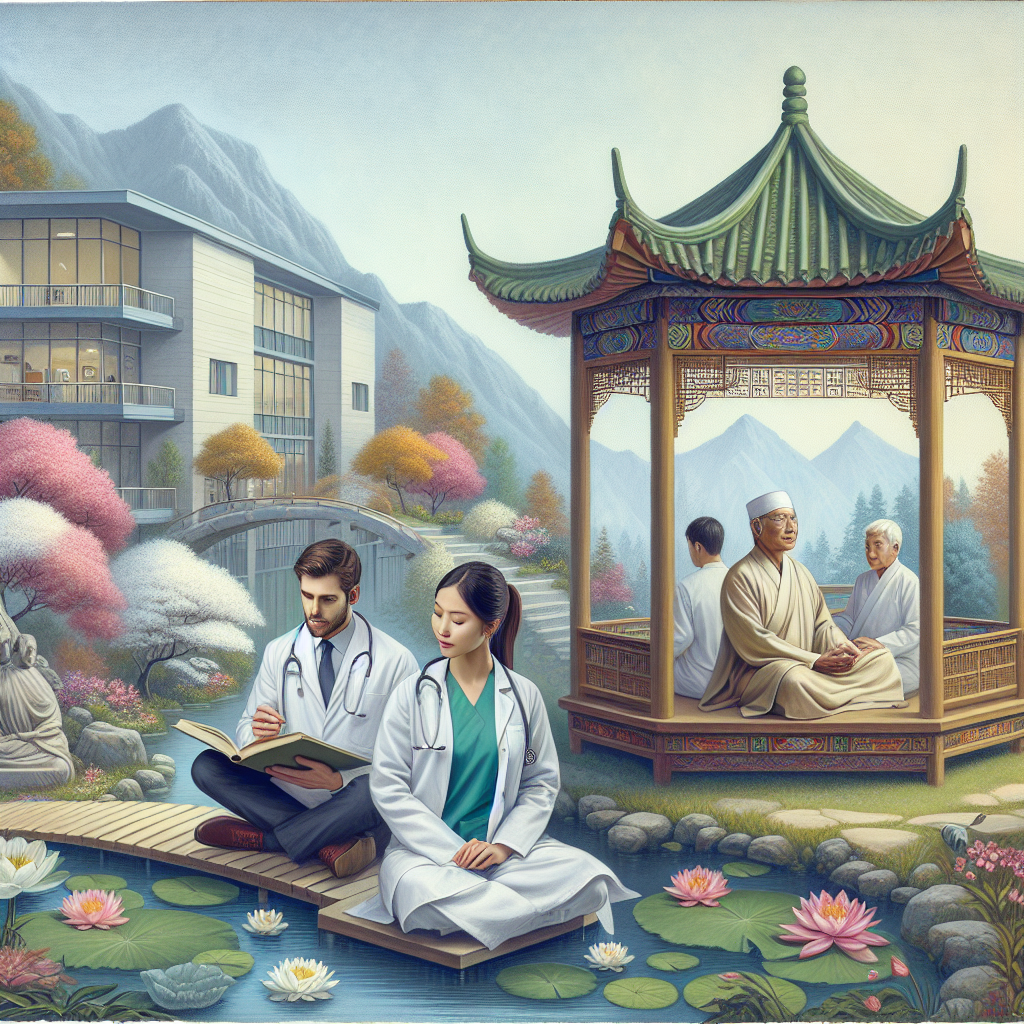Navigating Stroke Recovery: A Comprehensive Guide to Western Medical Treatments and Eastern Alternative Therapies
Stroke, a leading cause of disability worldwide, occurs when the blood supply to a part of the brain is interrupted or reduced, preventing brain tissue from getting oxygen and nutrients. The brain cells begin to die within minutes. Given the urgency and severity of this condition, timely and effective treatment is crucial. Both Western medical approaches and Eastern alternative therapies offer unique methods for stroke recovery. This article explores these contrasting yet potentially complementary approaches, providing insights into how they can be integrated for optimal recovery.
Western Medical Treatments: Evidence-Based Interventions
Western medicine, or conventional medicine, is grounded in empirical research and scientific methodology. When it comes to stroke recovery, the primary goal is to minimize brain damage and restore functionality as much as possible.
Immediate Medical Interventions
1. Thrombolytics: One of the most critical interventions for ischemic stroke (in which a blood clot blocks an artery) is the administration of thrombolytic drugs like tissue plasminogen activator (tPA). This drug helps dissolve the clot and restore blood flow to the affected area of the brain.
2. Mechanical Thrombectomy: In certain cases, doctors may opt for a mechanical thrombectomy. This procedure involves threading a catheter through an artery to the brain to remove the clot manually.
Post-Acute Phase: Rehabilitation and Medications
1. Rehabilitation Therapies: After the initial emergency treatment, the focus shifts to rehabilitation. This phase often involves physical therapy (PT), occupational therapy (OT), and speech-language therapy (SLT). PT helps patients regain motor skills and muscle strength, OT focuses on daily living activities, and SLT addresses communication issues.
2. Medications: Various medications are used to prevent a second stroke. These include antiplatelet drugs (like aspirin), anticoagulants (such as warfarin), and medications to manage underlying conditions like hypertension, diabetes, and hyperlipidemia.
Technological Advances
1. Robotics and Virtual Reality: Technological advancements have introduced robotic-assisted therapy and virtual reality (VR) as innovative rehabilitation tools. These technologies can provide repetitive, task-specific practice that is essential for neuroplasticity—the brain’s ability to reorganize itself.
2. Telemedicine: The advent of telemedicine has made it easier for patients to access care, especially in remote areas. Virtual consultations can help in continuous monitoring and adjustment of treatment plans.
Eastern Alternative Therapies: Holistic and Integrative Approaches
Eastern medicine, including Traditional Chinese Medicine (TCM) and Ayurveda, takes a more holistic approach to stroke recovery. This path emphasizes the balance of body, mind, and spirit and incorporates a variety of natural and alternative therapies.
Acupuncture
Acupuncture, a cornerstone of TCM, involves inserting thin needles into specific points on the body to stimulate energy flow (Qi) and promote healing. Studies have shown that acupuncture can help improve motor function, reduce pain, and enhance overall well-being in stroke survivors.
Herbal Medicine
1. Traditional Chinese Herbal Medicine: Formulas like Bu Yang Huan Wu Tang and Dan Shen have been used to improve circulation, reduce inflammation, and promote neurogenesis (the growth of new neurons).
2. Ayurvedic Herbs: In Ayurveda, herbs like Ashwagandha and Brahmi are believed to support neural function and cognitive health. These are often used in combination with other treatments to enhance recovery.
Mind-Body Practices
1. Tai Chi and Qigong: These ancient Chinese practices involve slow, deliberate movements, meditation, and deep breathing. They have been found to improve balance, coordination, and mental health in stroke patients.
2. Yoga: Incorporating yoga into stroke recovery can help improve flexibility, strength, and mental clarity. Specific poses and breathing techniques can be tailored to meet the individual needs of stroke survivors.
Dietary Modifications
Both TCM and Ayurveda emphasize the importance of diet in recovery. TCM recommends foods that promote blood circulation and reduce dampness and phlegm, which are thought to contribute to blockages. Ayurveda, on the other hand, focuses on balancing the body’s doshas (vital energies) through a customized diet rich in natural, whole foods.
Comparing and Contrasting the Approaches
Focus and Philosophy
– Western Medicine: Focuses on targeted, immediate interventions to manage symptoms and prevent further complications. It is highly structured and relies on empirical evidence.
– Eastern Medicine: Emphasizes holistic care, addressing the root causes of illness and promoting balance within the body. It integrates mind, body, and spirit in recovery.
Methodologies
– Western Medicine: Utilizes pharmaceuticals, surgical interventions, and advanced technologies.
– Eastern Medicine: Relies on natural therapies, lifestyle modifications, and mind-body practices.
Evidence and Acceptance
– Western Medicine: Widely accepted in most parts of the world, with treatments backed by rigorous clinical trials.
– Eastern Medicine: Gaining recognition and acceptance but still often categorized as complementary or alternative. Research is growing, but more studies are needed for widespread acceptance.
Integration Potential
Combining both approaches can offer a comprehensive recovery plan. For instance, a stroke survivor might use Western medical treatments for immediate intervention and acute care, while incorporating Eastern therapies for long-term rehabilitation and overall well-being. This integrative approach can address not only the physical aspects of recovery but also emotional and psychological health.
Conclusion
Navigating stroke recovery is a multifaceted journey that can greatly benefit from a combination of Western medical treatments and Eastern alternative therapies. While Western medicine provides the immediate, evidence-based interventions necessary to save lives and prevent further damage, Eastern medicine offers holistic practices that can support long-term recovery and overall well-being. By understanding and integrating these diverse approaches, stroke survivors can embark on a more comprehensive and effective path to recovery.

